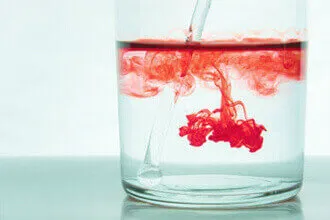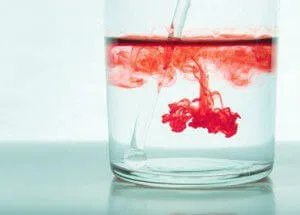
- Share on Facebook11K
- Share on Pinterest
- Share on Twitter
Water is the life-force of the earth and nothing would exist without it. It is free, pure and accessible. The human body is about 70 percent water, and it is necessary for every cellular process.
If all of these things are so, why do so many people pass on water for other high calorie-sugar laden drinks that provide zero energy and do nothing to promote health and well being?
Perhaps water is just too simple and unassuming, or perhaps we value only that which comes with a hefty price tag. Whatever the reason, beverage manufacturers have worked hard to put a new and alluring twist on plain old water.
One of the latest charades to mask the goodness of water comes from Kraft, which makes Mio Water Flavor Drops in sporty little bottles with a catchy label. This zero calorie water enhancer seems basically harmless, until you dissect its innards.
FoodFacts.com gives 17 of the Mio Water Flavorings an F rating and the tangerine flavor a C-.
The Ingredients
Water, Citric Acid, Propylene Glycol, Malic Acid, Contains Less than 2% of Natural Flavor, Sucralose and Acesulfame Potassium (Sweeteners), Potassium Citrate, Red 40, Blue 1, Potassium Sorbate (Preservative).
What’s Inside?
Propylene Glycol – a bitter liquid used to prevent food discoloration during storage. This dangerous substance is used in the production of polyester and antifreeze. It is also used to produce fake smog and smoke. Animal studies indicate that propylene glycol may cause serious health conditions when consumed over time.
Acesulfame Potassium – this artificial sweetener is 200 times sweeter than sugar and contains methylene chloride, a known carcinogen. It can cause nausea, headaches, liver problems, mood disruption, hypoglycemia, and possibly cancer.
Potassium Sorbate – Although this mold inhibitor is regarded as safe, its synthetic composition can lead to allergic reactions, diarrhea, nausea and nutrient loss in food.
“Natural Flavor” – both artificial and natural flavorings are concocted in a laboratory using what many people would consider less than natural. Because the regulations regarding natural flavorings are so loose, there is lots of wiggle room for strange ingredients.
Keep in mind that regardless of the origin of natural flavors, food manufacturers are not required to provide information about the chemicals used to create flavor. The flavor could actually be the result of hundreds of mixed chemicals. Suffice it to say, the lack of transparency here should leave us all a bit nervous.
Sucralose – This highly dangerous artificial sweetener is sold under the popular name of Splenda. A study conducted at Duke University found that sucralose, a synthetic compound, negatively alters gut microflora and absorption of nutrients. This means that anything good that water has to offer is lost when you use the Mio water flavoring. Additionally, there is concern that sucralose can cause bowel and kidney disturbance and an increased risk of tumor growth.
 Don’t Waste Your Money: Drink Pure Water Instead
Don’t Waste Your Money: Drink Pure Water Instead
So, while the high priced Mio Water Flavoring may seem like a neat and practical way to boost your water, you are getting nothing good in return from a health perspective. As always, we suggest drinking filtered water over any other beverage. If you really want some flavor, try putting some fresh lemon or lime in your glass or infusing some fresh berries in a glass of ice water.
-The Alternative Daily
Sources:
http://www.hazard.com/msds/f2/cfz/cfzbb.html
http://www.fitday.com/fitness-articles/nutrition/healthy-eating/top-number-most-dangerous-artificial-sweeteners.html#b
http://www.cspinet.org/reports/chemcuisine.htm
http://foodidentitytheft.com/%E2%80%9Cnatural%E2%80%9D-can-run-the-gamut-from-bugs-to-beaver-butts/
http://www.rinerdc.com/uploads/Splenda_article.pdf
http://www.truthaboutsplenda.com/
“Common Food Safety Questions from FSIS – Natural Flavorings on Meat & Poultry Labels.” USDA Food Safety and Inspection Service Home. Web. 16 May 2011. .
- Share on Facebook11K
- Share on Pinterest
- Share on Twitter

